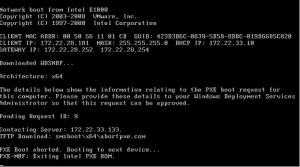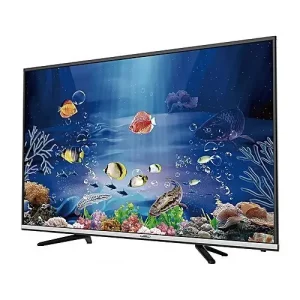How to Build Your Own Gaming PC: A Step-by-Step Guide


How to Build Your Own Gaming PC: A Step-by-Step Guide


Are you ready to embark on an exciting journey of crafting your own gaming PC? Building a gaming rig from scratch can be an incredibly rewarding endeavor that allows you to tailor your system’s performance to your unique gaming needs. This comprehensive step-by-step guide will walk you through the process of creating a powerful gaming setup that will elevate your gaming experience to new heights.
Planning Your Build
Creating a blueprint for your build is essential to ensure you achieve the best performance within your budget:
1. Define Your Budget and Performance Goals
Begin by establishing a clear budget for your build. A well-balanced gaming PC can be created within various budget ranges. Also, consider the level of gaming performance you want to achieve. Do you primarily play esports titles, open-world RPGs, or AAA action games? This will guide your component selection.
2. Select the Right Components
Every gaming PC build comprises several key components:
Processor (CPU):
Choose a CPU that strikes a balance between gaming and multitasking performance. Examples include the Intel Core i5 or AMD Ryzen 5 series.
Graphics Card (GPU):
The GPU is crucial for gaming performance. Opt for a powerful GPU like the NVIDIA GeForce RTX 30 series or AMD Radeon RX 6000 series for smooth gaming at high resolutions.
Memory (RAM):
8GB is a minimum, but 16GB or more is recommended for modern gaming. Look for high-speed DDR4 memory for optimal performance.
Storage:
Consider a combination of SSD (for faster load times) and HDD (for storage capacity). NVMe SSDs offer lightning-fast speeds.
Motherboard:
Choose a motherboard compatible with your CPU, with features you need (e.g., USB ports, Wi-Fi support, overclocking capabilities).
Power Supply (PSU):
Select a PSU with sufficient wattage for your components and future upgrades. Modular PSUs help with cable management.
Case:
Opt for a case that fits your components and offers good airflow. Look for cable management options and space for additional cooling.
Cooling:
Air or liquid cooling solutions are essential for preventing overheating, especially if you plan to overclock your components.
Assembling Your Gaming PC
Now let’s roll up our sleeves and get hands-on with assembling your gaming masterpiece:
3. Prepare Your Workspace
Clear a spacious, well-lit area to work in. Gather your tools, including screwdrivers, cable ties, and thermal paste.
4. Step-by-Step Assembly
1. Install the CPU
Open the CPU socket on the motherboard and gently place the CPU, aligning the markers. Lock it in place, and apply a pea-sized amount of thermal paste. Attach the CPU cooler, ensuring even pressure.
2. Install RAM
Find the RAM slots on your motherboard. Unlock them by pushing the tabs outward. Align the notches on the RAM sticks with those on the slot and push down until the tabs lock the RAM into place.
3. Mount the Motherboard
Place the I/O shield in the case, aligning it with the motherboard ports. Carefully place the motherboard on the standoffs and secure it with screws. Connect power and data cables.
4. Install Storage and Graphics Card
Attach the SSD or HDD to their respective slots, and secure the graphics card into its PCIe slot. Connect power and data cables to the storage, and ensure the GPU clicks into place.
5. Connect Cables
Connect power cables, data cables, and front panel connectors. Neatly route cables to avoid blocking airflow. Cable ties or Velcro straps can help with cable management.
6. Test and Boot Up
Before closing the case, connect a monitor, keyboard, and mouse. Power on your PC to check if everything lights up and fans spin. If successful, proceed to install your preferred operating system.
Tips for Optimal Performance
1. Cooling is Key:
Investing in quality cooling solutions, such as an all-in-one liquid cooler or high-performance air cooler, will help maintain lower temperatures and extend component lifespan.
2. Keep Drivers Updated:
Regularly update graphics card drivers and motherboard BIOS to ensure compatibility with new games and to fix potential bugs.
3. Cable Management Matters:
Efficient cable management not only enhances airflow but also gives your build a clean, professional look. Consider using cable combs or clips for a tidy setup.
4. Monitor Temperatures:
Use software tools to monitor CPU and GPU temperatures. High temperatures can lead to thermal throttling and reduced performance.
Example Builds:
1. Entry-Level Build:
- CPU: AMD Ryzen 3 5600X
- GPU: NVIDIA GeForce GTX 1660 Super
- RAM: 16GB DDR4 3200MHz
- Storage: 500GB NVMe SSD
- Motherboard: B550 Micro ATX
- PSU: 550W 80+ Bronze
- Case: Micro ATX with good airflow
2. High-End Build:
- CPU: Intel Core i9-12900K
- GPU: NVIDIA GeForce RTX 3080
- RAM: 32GB DDR4 3600MHz
- Storage: 1TB NVMe SSD + 2TB HDD
- Motherboard: Z690 ATX
- PSU: 750W 80+ Gold
- Case: Full Tower with premium features
By meticulously selecting components, following the assembly process, and implementing performance-enhancing tips, you’ll create a gaming PC that not only meets but exceeds your expectations. Enjoy the satisfaction of playing your favorite games on a system that you’ve built with your own two hands!








